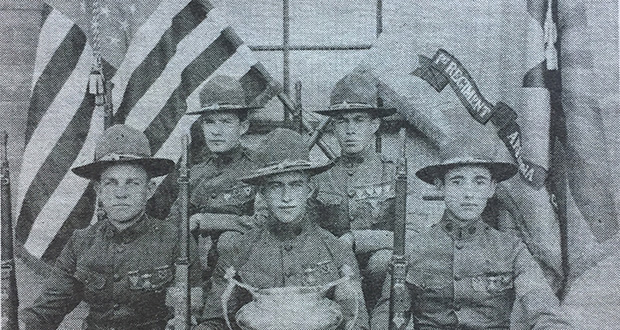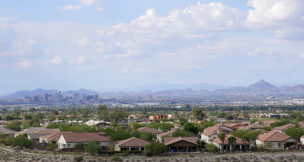Paradise
Arizona Capitol Reports Staff//September 1, 2006//[read_meter]

In about six years’ time, the population of Paradise swelled when gold was struck, and shrank back down when it was gone, leaving little more than the ghost town pictured here.
In 1940, the year this photograph was taken, an unidentified scribe noted “a score of weatherworn frame buildings scattered along the narrow, winding mountain road” that snakes through Paradise. Certainly, the buildings pictured here — the Paradise post office, and a private residence — influenced his prose.
“Almost all the buildings of this former boom camp have false fronts that are now sagging remnants,” he continued. “All but two or three are abandoned and those lived in are scarcely distinguishable from the others.”
Located at an elevation of 5,500 feet on the eastern slope of the Chiricahua Mountains between Willcox and Douglas, and about 15 miles from the Arizona-New Mexico border, Paradise was little more than a glint in an entrepreneurial eye. Its glory days — if such a term applies — lasted about half a dozen years, and were less than dazzling.
But sometimes reality just doesn’t cut it. Whenever bodies of ore were struck that showed even slight potential, the Arizona territorial press commenced a feeding frenzy in adjectives. “Trains from every direction are carrying men to Paradise, the new mining town in the Chiricahuas” penned the Bisbee Review in May 1904, after the Chiricahua Development Company consolidated several small claims in the area. “This company is now employing in the neighborhood of 100 men and is installing a vast amount of up-to-date development machinery.”
The Review, however, did not exaggerate when it described the locale: “The little town of Paradise is located on Turkey Creek, 1 ≠ miles below the mines, in a beautiful wooded canyon, where all the trees of the mountains can be seen.”
In a paragraph obligatory to town promoting, the Review noted: “Paradise has 40 school children, 400 people in the district, five saloons, one store, one butcher shop, one barber shop, one hotel, one feed store and two restaurants.”
Yet another report, written in 1931, claimed that Paradise had 13 saloons with one boasting the not-too-subtle name of Boozer’s Place. Saloon counting figured mightily in Western lore. Writers with lurid imaginations could paint a mild town wild by its number of drinking and gambling establishments, and bordellos. Paradise did not, however, enjoy a spectacular history of bad folks doing bad things.
Certainly, valuable ore — copper, lead and silver primarily — was extracted from mines in the Paradise district. But viability and profitability were short lived. In a few quick years — some historians say by 1907, others by 1909 — Paradise became a virtual ghost town.
Writing in the January 1932 issue of Progressive Arizona, historian Frank Lockwood noted that about 25 or 30 people continued to live in Paradise. He added that, “Here, no doubt, when tourists come to know this region, will spring up one of the most attractive resorts in the Southwest — with a spacious, picturesque lodge adapted to the forest surroundings and the historic setting…”
Time would reveal Lockwood a better historian than prophet. Paradise is largely deserted. There is no resort, no lodge. But no matter. Visitors seeking out this magnificent area are struck by the appropriateness of the name.
— W. Lane Rogers. Photo courtesy of author.

















